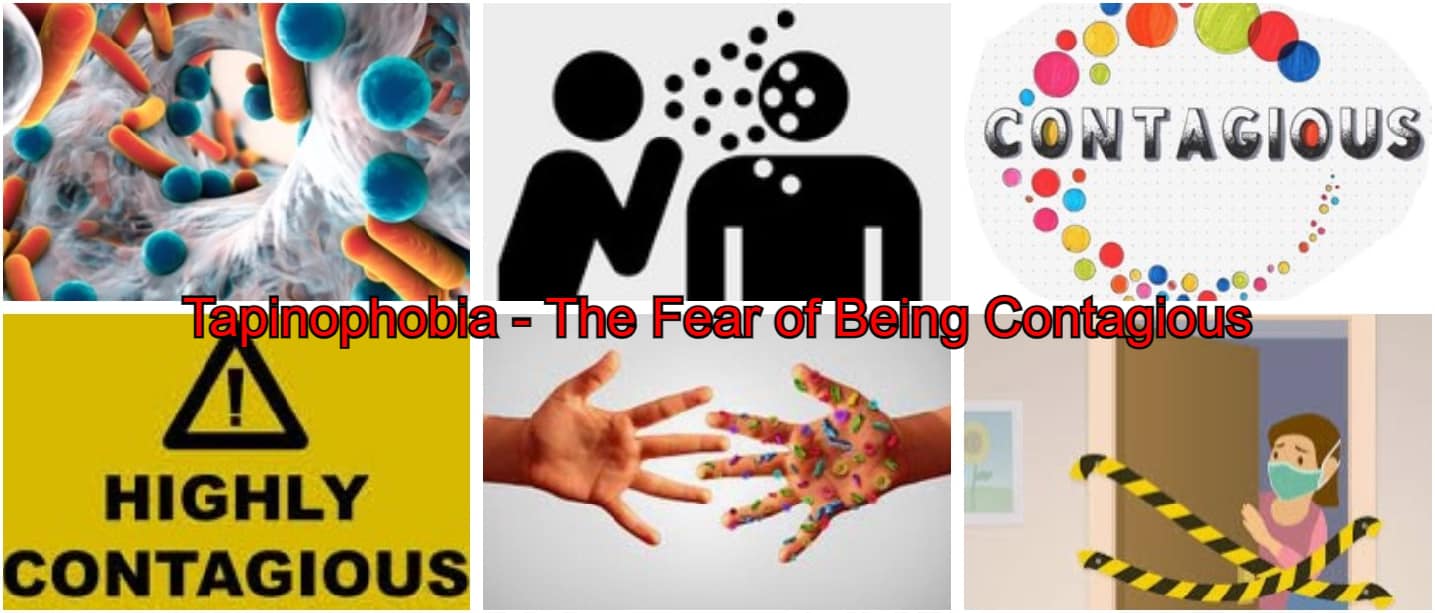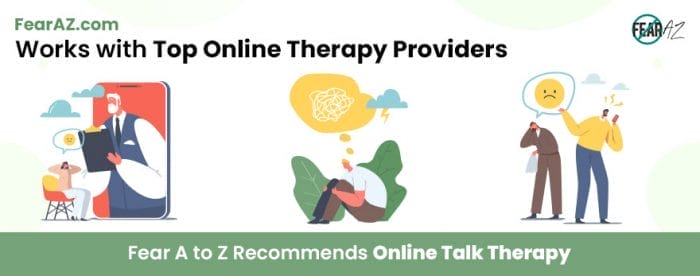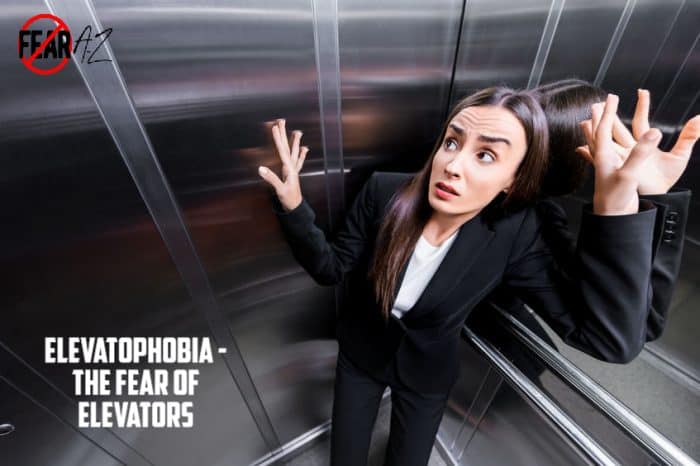Share This Article
Tapinophobia – The Excessive Fear of Being Contagious
Quick Fact: What’s the most contagious disease? Measles takes the top spot.
Someone who has measles can infect 90 percent of those around them. Not only that, but the virus stays active up to two hours after someone with measles has left a room.
Childhood diseases like chickenpox and mumps are not far behind, followed by new diseases like COVID-19.
Given how easily diseases can spread, it’s a good idea to take measures to avoid infecting others when you’re sick. But what if this turns into an unreasonable fear of being contagious? What if your daily or weekly routine comes to a halt because of tapinophobia?

What Is Tapinophobia?
Tapinophobia is the extreme fear of being contagious. Sufferers constantly worry they will make others sick or even kill them. This irrational fear worries a person to such an extent that they are in constant anguish. At first glance, it seems like a valid concern. There’s no doubt that contagious diseases easily spread from one person to another. You can get some simply by touching someone who is sick. Other contagious diseases can spread when a sick person sneezes or coughs. You can even get them from holding an object that a sick person has touched.
When you’re sick, it’s a good idea to avoid interacting with others, wear masks, and handwash frequently. But this caution can be taken to extremes. Do you refuse to leave your house because you’re afraid you may be contagious even though you have no symptoms? Do you worry that going out may make other people sick? If you answered yes, you may have tapinophobia. In severe cases, some with tapinophobia not only avoid the situations they fear but also the thought of it altogether. The brain creates a reaction to the fearful situation even when the person is not actually experiencing it.
Tapinophobia: A Social Phobia
Social phobias are characterized by phobias that involve other people or social situations. Examples are:
- Performance anxiety
- Fear of public speaking
- Fear of embarrassment or humiliation
- Fear of eating in public
What Causes Tapinophobia?
As of now, there’s no single definite cause for phobias. Like other phobias, a lot of factors play interrelated roles to develop tapinophobia, including trauma, genetics, and upbringing. Let’s take a closer look at these tapinophobia causes.
Genetics
A family history of mental illness increases the chances of a person developing tapinophobia. If this genetic predisposition is combined with a traumatic experience, a person can develop a full-fledged phobia.
Trauma
A physically or mentally painful experience can also trigger tapinophobia. This usually occurs during childhood.
For example, someone close to you may have died of an infectious disease. Another is living through a pandemic, where lockdowns and quarantines affected daily life. Both of these experiences can influence how you behave decades later.
Associated Phobias
A person who already has another social phobia, say agoraphobia, can also manifest tapinophobia.
Any of the above reasons or a combination of these can lead to a person developing tapinophobia.
Symptoms of Tapinophobia
Now that you know what can trigger the fear of being contagious, let’s explore the telltale signs of this phobia. First of all, someone with tapinophobia will make sure they are not contagious by using some or all of the following methods:
- Washing hands repetitively
- Refusing to shake hands or hug others
- Keeping a safe distance from people
- Developing compulsive behavior to avoid coming in close contact with others
- Resorting to justifying their fear to themselves
Physical Symptoms
Sufferers often experience panic attacks when confronted with gatherings and other triggers. Other signs include:
- Sweating
- Hot/cold flashes
- Headaches
- Nausea
- Shaking
- Numbness or tingling sensations
- Increased heart rate
- Dizziness
- Breathlessness
- Hyperventilation
- Dry mouth
- Inability to articulate words
Mental/Emotional Symptoms
A fear of being contagious takes a toll on a one’s mental and emotional state and forces them to live in constant dread.
- Fear of death
- Anger
- Confusion
- Withdrawal
- Anxiety at the thoughts of being contagious
- Guilt
- Feeling sad
- Inability to handle anxiety
The symptoms vary from person to person and depend on many factors. While some may avoid gatherings, others resort to continuously sanitizing themselves throughout the day.
Self-Help Guide to Coping with Tapinophobia
Tapinophobia treatment starts the day you begin self-help steps to reduce anxiety. The key is to redirect energy toward something productive rather than giving in to the dread.
Yoga
Practicing yoga puts you in a meditative state of mind and relieves the anxiety associated with tapinophobia.
Cardio Workouts
Doing cardio workouts like running, biking, swimming, etc. diverts your mind from worrying. They also help you expend nervous energy.
Meditation
Meditation distracts your mind from negative feelings. Instead, you focus on something calming. When you meditate, you focus on the sounds and sensations around you. You may observe the way your belly rises and falls as you breathe. It takes practice to experience the calming effects of meditation, but it’s worth it.
Caffeine Ban
Caffeine raises your heart rate causing you to feel more anxious. Eliminating (or at least limiting) coffee, chocolate, and energy drinks from your diet will help reduce your day-to-day anxiety.
Seeking Professional Help
You can overcome the fear that you are the reason for other people’s sickness by initiating treatment. Professional help gets you to the root of the problem. No single treatment can cure tapinophobia, but some treatments do reduce the anxiety associated with it.
The following are some techniques used by professionals. They’re not specific to tapinophobia, but they’ve proven to be useful in most phobia treatments.
- Cognitive behavioral therapy
- Talking therapy
- Dialectical behavior techniques
- Mindfulness-based stress reduction
- Exposure therapy
Of these methods, the following two are especially useful for those with tapinophobia:
Talking Therapy
Talk therapy is a form of counseling which involves talking to a therapist about your thoughts. With the help of your therapist, you’ll organize your thoughts and understand your reactions better.
Cognitive Behavioral Therapy (CBT)
Like talk therapy, CBT improves your mental health by allowing you to better understand why you think and behave the way you do. Cognitive behavioral therapy is used to treat anxiety disorders like generalized anxiety disorder (GAD) and obsessive compulsive disorder (OCD). It will guide you to deeply analyze your fears rather than respond with an instant subconscious reaction.
Investing in professional help is worth it. Never take a phobia lightly, because phobias can overcome your daily life. Your anxiety can also sow the seeds of depression.
How to Cope with Tapinophobia
Are you uncertain how to cope with tapinophobia? The first step involves acknowledging your fear. Only then can you work towards coping with its symptoms. One with tapinophobia may develop “safety behaviors” that ensure they do not experience their fear. While these avoidance behaviors create a temporary haven, relying on such behaviors can worsen the condition.
It’s extremely difficult to live in complete isolation. Doing so may require moving to the wilderness and living off the grid. Instead, it’s better to practice stress-management techniques like meditation or yoga. Positive affirmations may also help you cope. Rationalize your negative feelings and tell yourself that it is safe to meet with others. Realize that the normal precautions are enough to safeguard the health of those around you. There is no shortcut to overcoming a phobia. It will take patience, time, and consistent effort.
Wrapping Up
Tapinophobia can seem hard to manage. But with patience and effort, one can beat it. Soon, you can go out without fear of making others sick.




